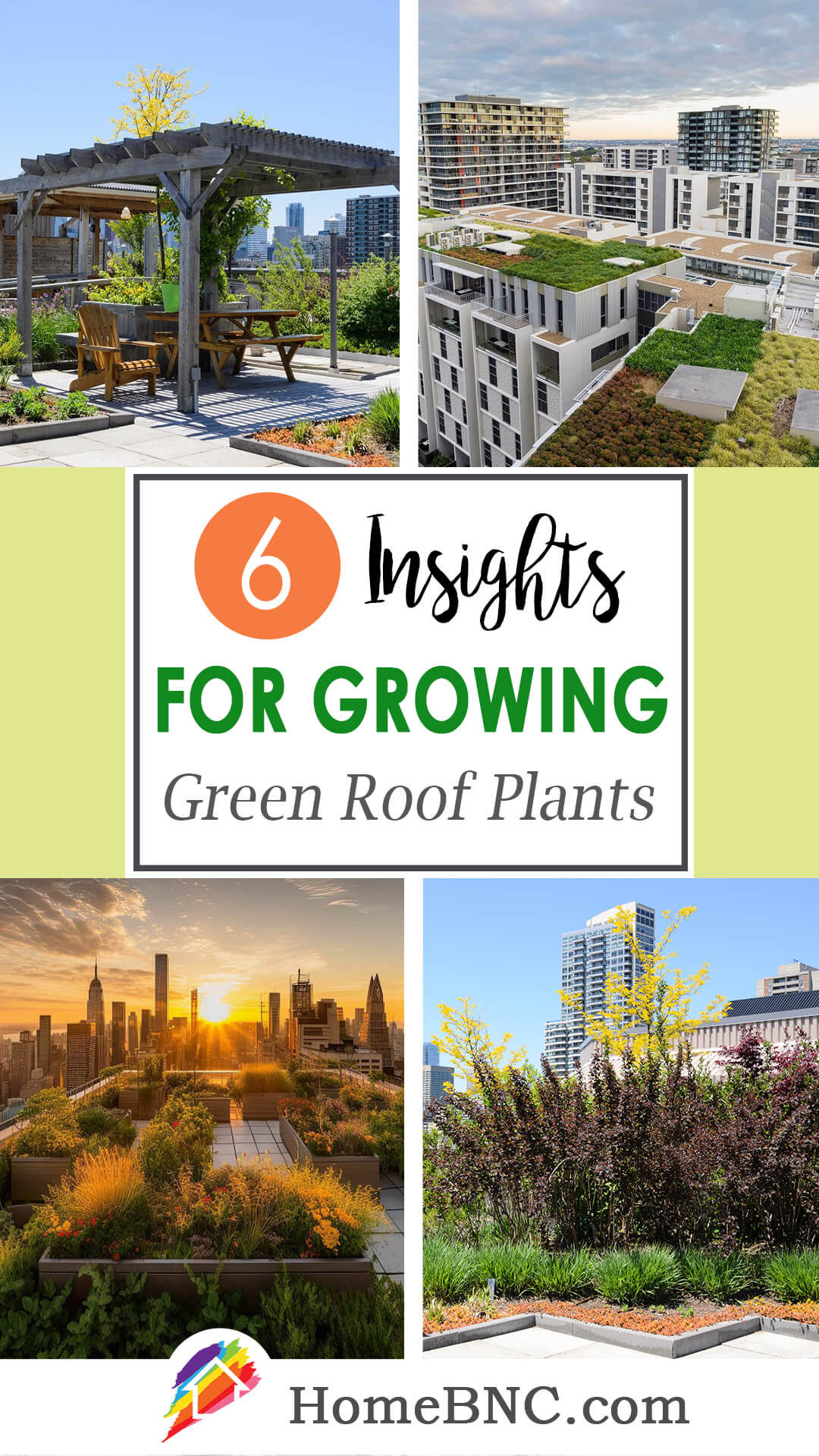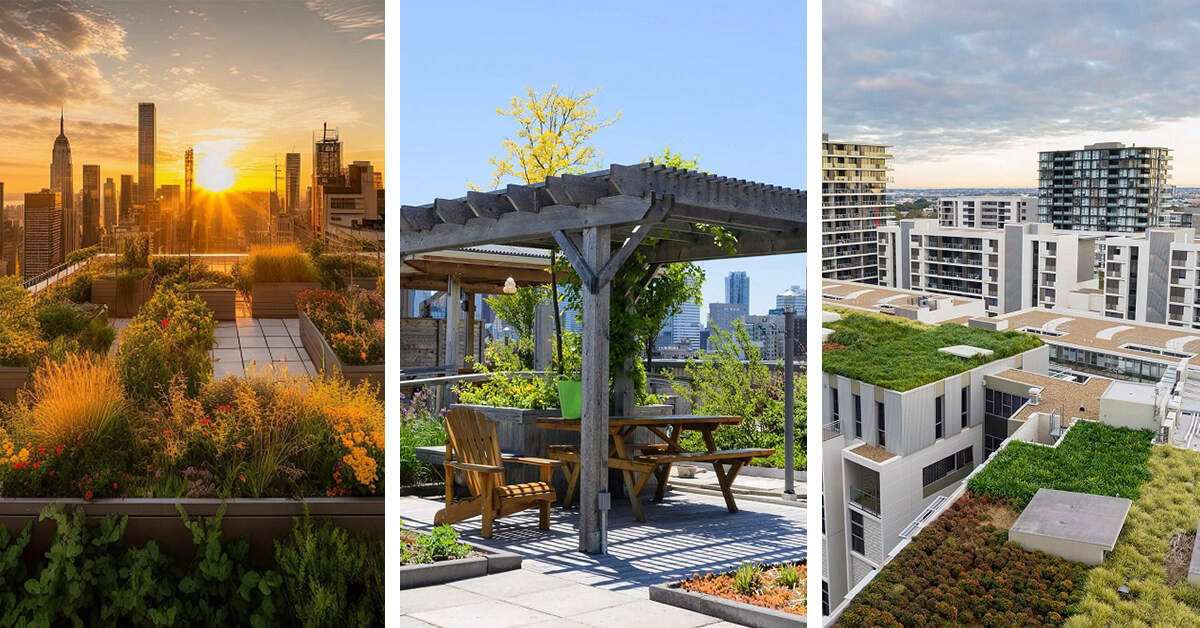Living in an urban environment can sometimes feel gray all the time. You want to brighten things up but have limitations. Sometimes you have no room left in your yard, and in other instances, you don’t have a yard at all. The answer to this predicament is looking into plants to grow on a green roof.
Going up, Not Out
More and more towns expand into full-size sites every day. You have the mall, a movie theater, supermarkets, and car repair shops, all within a reasonable difference. But convenience has a price, namely the loss of natural spaces. New trends have become creative, and look at both walls and roofs as potential gardening locations.
There are many plants that grow quite well on vertical spaces and urban rooftops. If you’re looking for a great location for morning coffee or winding down at the end of the day, a green roof might fit the bill.
Your efforts need not be over the top. Gardens of any sort take time and attention for them to thrive. So, if you already have a packed schedule and still want an urban garden on the roof, look to a small, pleasing collection of flowers, herbs, bushes, and bulbs. The smaller option works best for people with older wooden roofs, too.
The Root of Roof Gardens: We begin to see something like modern green roofs in the 19th century. Both Germans and Norwegians discovered using plants on their roof for insulation. Add a few flowers, and you have a multi-tasked space; useful and beautiful.
Key Takeaways:
- Plants to grow on a green roof need to be hardy to withstand weather changes.
- You may need a permit and inspections for your green roof from your town or city. Renters will need written permission from their landlord.
- Urban gardening is good for personal development, providing a way to decrease anxiety and improve emotional and physical well-being.
6 Insights into Creating Green Roof Gardens
1. Thoughts Before You Plan
Before you dive headfirst into a bouquet of roses, there are some things to consider. First, while you might have visions of the Hanging Gardens of Babylon, there is a certain level of activity and care a green roof requires. The effort can prove charming, but when the reality of upkeep hits home, you might find your project doesn’t provide the peaceful space for which you wished. Of course, if you cannot do the gardening yourself, perhaps there’s a child, grandchild, sibling, etc., who would love to spend time with you on your roof!
Another thing to consider is how are you going to get things in and out. Most homes do not have easy roof access. When you buy, you want to look for plants you can navigate without chipping the wall paint or injury to the greenery.
Even if you have ready roof access, you need to make sure your roof can handle the weight. If you want to grow plants there, don’t just guess. Can you imagine the mess if the roof’s structural integrity can’t handle the weight?
Other good questions:
- How do you get water to your garden?
- Do nearby structures shade different parts of your roof throughout the day (this is good to know for plants requiring partial sun)?
- Will you need some form of wind fencing? Sometimes, you can turn that vertical space into a place to grow things too. Think of sturdy trellis work with vines, for example.
- Are you going to need electricity (i.e., do you plan on entertaining there at night)?
- Can you find a place (or already have one) where you can keep all your necessities in one place?
- And the final HUGE consideration is cost. What budget are you going to set to begin and end successfully?
A Historical Oasis
Looking a little further back than Germany and Norway, the Mesopotamian era (okay, a lot; 4th millennium BCE – 600 BCE) sported ziggurats, handmade above-ground terraces filled with greenery. The Romans had a Villa of the Mysteries in Pompeii with uplifted patios filled with plants. In the 11th century, the Persian philosopher Nasir Khusraw described buildings reaching 14 stories high with plush roof gardens.
2. Plants for your Green Roof Garden
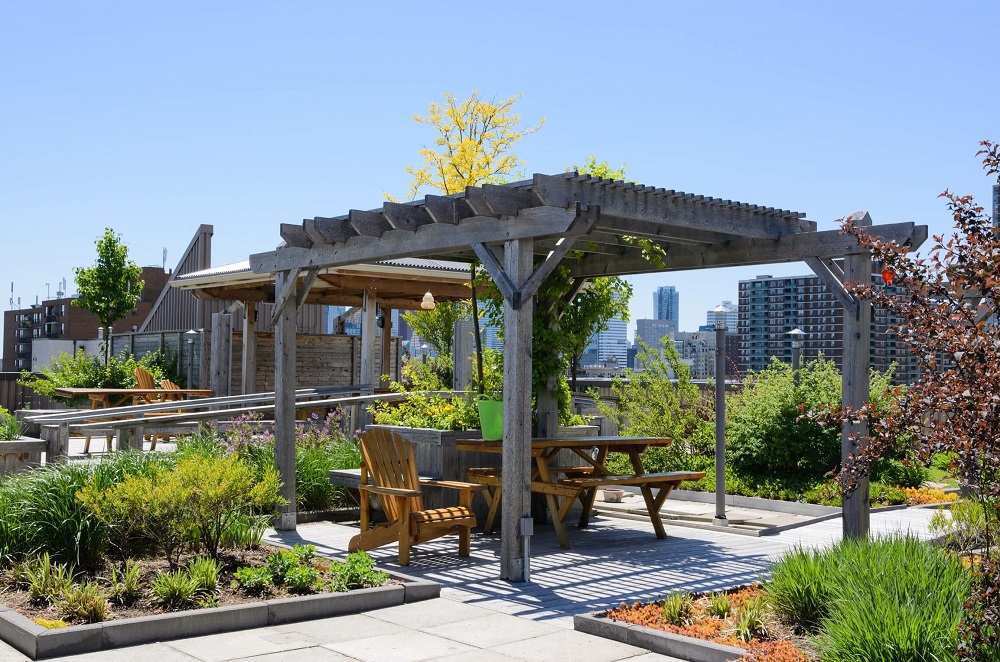
Sometimes, we buy plants at the spur of the moment. Something caught our eye. However, that particular bit of vegetation may not withstand outdoor living, depending on your location. Some like it hot, some like it cold. Some want sun, some hide in the shade. You may have a roof that reaches temperatures over 170 F, experience high winds, or a plethora of snow.
Before you buy, check the instructions and hardiness zone of your plant to save a lot of heartache. Let’s review some categories.
Consideration by Environment
Drought Tolerant: These plants are blissfully low maintenance. You’ll love succulents. It’s nearly impossible to kill them. Cactus is ideal, as is butterfly weed.
Shade Tolerant: When a part of your roof receives little sun during parts of the day, you can put plants that prefer the shade or partial shade in that area. Think hostas!
Sun-Solicitous: If you get a lot of sunlight, then move toward vegetables and fruits (strawberries) or flowers (marigolds).
Wind-Worries: If you have a lot of wind in your area, put some of your plants’ finery low to the ground, including honeysuckle and ornamental grass.
Consideration by Category
Annuals: Your perennials create a backdrop. You can bring in annuals for change and splashes of color. Examples include marigolds, zinnias, morning glories, and impatiens.
Evergreens: Smaller evergreens are perfect choices for roof-top growing. Look at dwarf conifers and juniper.
Perennials: Why plant year after year? Set your eyes on roses, ferns. Lavender, sage, and sedums.
Shrubbery: Many shrubs are very hardy. Barberry and cotoneaster are two examples.
Trees: Obviously, the mighty oak isn’t the best choice. Look for little leaf and dwarf options like Japanese maple (the weeping variety is visually impressive). If you have wind in your region, make sure to support these plants appropriately.
My, How Big You Are!
The largest open-air rooftop soil farm in the world is Sunset Park. Located in New York, Sunset Park covers over 3 acres. (13,000 sq meters). For an amazing visual, you can travel to Thailand Thammasat University’s rooftop farm. You’ll see 40 different edibles, including rice. These edibles feed students.
3. Benefits & Challenges of Growing Plants on a Green Roof
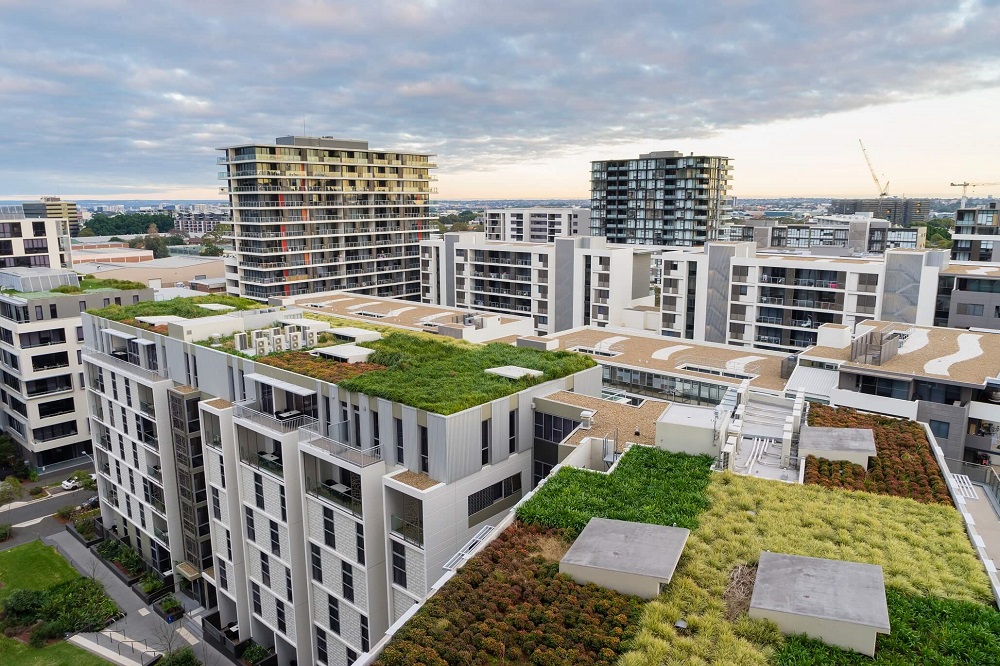
One of the biggest advantages of rooftop gardening is being able to enjoy fresh, growing plants no matter the living situation. You have a better chance for your plants to receive natural sunlight, and because they are not on the ground, the greenery is a bit more pest resistant (you won’t find deer there!).
If you ever sell your home, a roof garden improves its property value for resale. When properly constructed, the life expectancy of your roof expands, too. And hey, check about tax incentives. You may have one waiting!
In terms of disadvantages, having a dependable water source ranks highly. Because rooftop plants get more sun, they are typically thirsty. Determining a good irrigation system may prove daunting.
Then too, if you get hit with an unusual weather issue, destruction by intimate heat, winds, or savage downpours is not unknown. How much weight your roof will bear can be a real stickler. Consult with a professional on stress and weight limitations.
Green Roof Construction 101
The average roof garden consists of 5 layers. First is a root barrier, so plant roots don’t start growing into the house. Protection mats deter puncture. The drainage layer diffuses water. A filter sheet strains fine particles, and last, a growing medium.
A Rooftop Garden in the Spotlight: You can find perhaps the best-known green roof garden at the Academy of Science in San Francisco, CA. It houses weather stations, wind, rain, and temperature monitors and provides light to interior areas via skylights. This garden requires 1.7 million plant trays. The area has become a healthy habitat for pollinators, birds, and, of course, people.
4. Plants to Grow on a Green Roof With Kids
Schools and parents alike look to green roof areas as having the potential for education and family interaction. This manifests most notably in urban locations where kids would not other have opportunities for hands-on gardening. The short supply of open land opened the door for some creative thinking, so we can give children that connection to the earth, even up in the air on the rooftop.
The first consideration in using green roofs with children is safety. There must be some type of barrier safeguarding against falls. Next, age group matters. Younger children may be happy just watching you work. You can tell them stories about the plants as you go. Put them into the story! What a wonderful sharing moment for various members of the family (not to mention there are no cell phones!)
The next step up is having children help with putting plants into the ground. This becomes a little more mathematical. How much space does the vegetation need between each plant? How deep should the flora go? Can they grow with other plants? Why or why not? Don’t forget weeding and watering!
Each time the child comes by, they can see progress. It’s exciting. If, at the end of the season, they can harvest and eat their choice – well, what a smile. Ask if you can include some of the bounty for dinner.
When you get to high school, you can begin talking about rooftop gardening and design. As an educator, you can ask mindful questions like:
- Can they identify a space with potential for Urban gardening?
- Do they believe the plants are beneficial to the space, and why?
- What do they see as potential barriers to creating the space?
- What is the best choice of plants? Explain the selection.
- Let them sketch a model of their “dream garden.”
- Ask about all the information they would need to gather to bring that garden into reality.
- At the end of the day, just let kids enjoy the space. They don’t have to overthink it. There’s sunshine, peers, parents, and plants. It’s a perfect mix. Hey, have a picnic!
Eat, Drink, and Garden
The occurrences of rooftop gardens show signs of growing geometrically, hand in hand with the foodie fervor. What more could you want as a chef than herbs, vegetables, or even edible flowers picked only moments before cooking? Some restaurants isolate their harvest away from patrons. Others welcome people into the experience with outdoor dinners and drinks.
5. Community Therapeutic Roof Gardens
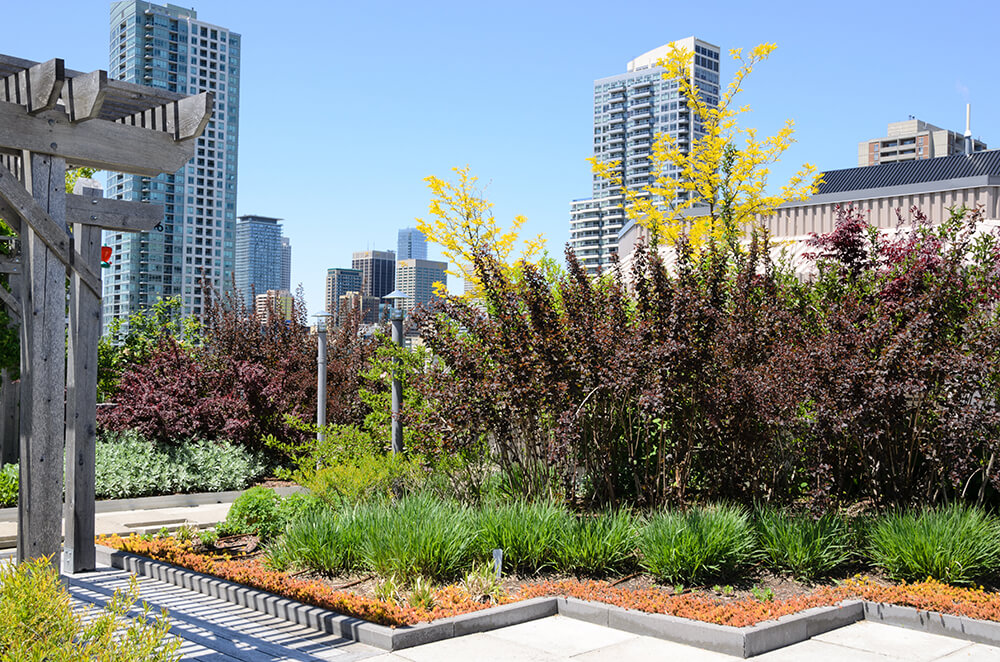
Hospitals recognize the benefits of natural spaces for restoration. In turn, some are building roof gardens available to patients, staff, family, and visitors. It is an oasis in a sea of movement, noise, strangers, and sometimes isolation. They’re easily accessible, too.
St. Louis Children’s Hospital is an example of one such facility. Their goal was to create an area with natural light, fresh air, and space to move around outside the confines of their rooms. Currently, the hospital provides 8,000 square feet of flowers, pathways, shrubs, and enough room for wheelchair mobility.
The administration sees the garden as a place to reflect, decompress, and heal. Within the garden, various events take place, like storytelling. The fun aspect supports the goal of providing occupational and physical therapy, too.
Research Supports Community Gardens: People who have access to community gardens display better mental and physical help. If the garden has edibles, they will make healthier choices. In low-income communities, rooftop gardening provides access to fresh food. It’s close to home and encourages youth development in a safe environment.
6. “Farm to table” Vegetables
One of the most popular forms of green roofing is for fresh food. Roots, berries, herbs, fruits, and vegetables are all at the ready when you need them. You know exactly how these items grew, what’s in the soil, and if you treated them in any non-organic way – something on which you can’t always depend on the local supermarket.
Make a list of family favorites. See what you can grow in your region successfully. Do a little research on best practices for each edible. Then, enjoy!
Gardens Getting Rocky
Let’s face it, not everyone has a green thumb. And while such individuals may love the idea of a rooftop garden, they shake their heads at the prospect. But if you want something beautiful, you can’t kill, take a cue from the Far East and make a Zen-style garden. The simplest of these efforts include sand, rocks, and a rake. That’s it! Zen guiding recommendations for your effort are
- Keep it simple
- Keep it natural
- Rely on subtilty
- Encourage stillness
- Lean into asymmetry
- Allow for the element of surprise and magic
6 Categories of Plants You Can Grow on Your Roof

Learning what plants to grow on your green roof might inspire other ideas. You could combine them with solar panels or beekeeping, for example. Are you a stargazer? Set up your telescope within your personal glade. If you have the space and desire, there is no reason you cannot create a green roof. Share it with friends and family. It’s pleasant sitting on top of your home instead of having to go away from it to encounter the wonders of nature.
[wp-faq-schema title=”Frequently Asked Questions About Green Roof Plant Care” accordion=1]